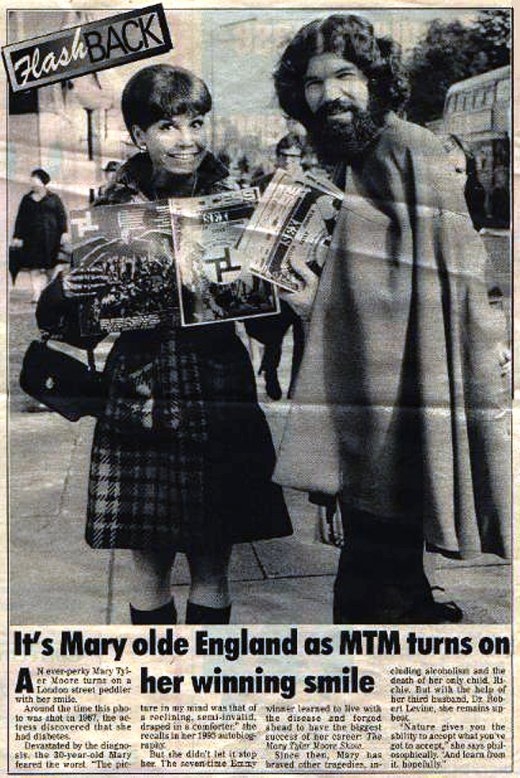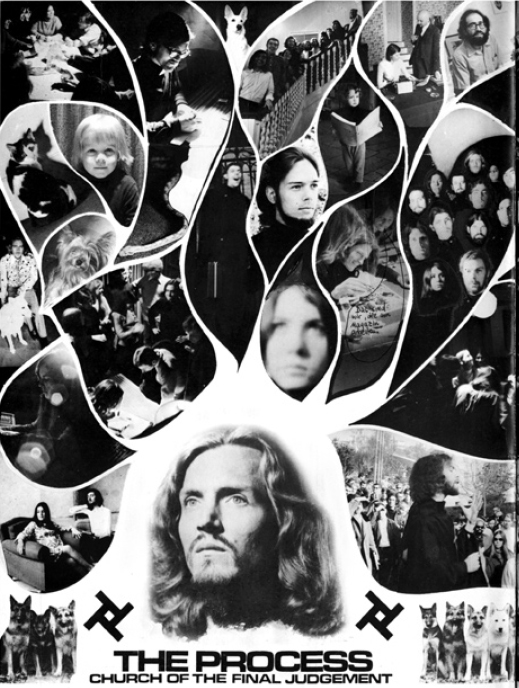
WIKIPEDIA: The Process, or in full, The Process Church of the Final Judgment, commonly known by non-members as the Process Church, was a religious group that flourished in the 1960s and 1970s, founded by the Englishman Robert DeGrimston (originally, Robert Moor) and Mary Ann MacLean. It originally developed as a splinter client cult group from Scientology,[1] so that they were declared “suppressive persons” by L. Ron Hubbard in December 1965. In 1966 the members of the group underwent a social implosion and moved to Xtul on Mexico‘s Yucatan peninsula, where they developed processean theology (which differs from, and is unrelated to process theology). They later established a base of operations in the United States in New Orleans.
They were often viewed as Satanic on the grounds that they worshipped both Christ and Satan. Their belief is that Satan will become reconciled to Christ, and together will come at the end of the world to judge humanity, Christ to judge and Satan to execute judgment. Vincent Bugliosi, the prosecutor of the Charles Manson Family trial comments in his book Helter Skelter that there may be evidence Manson borrowed philosophically from the Process Church, and that representatives of the Church visited him in jail after his arrest. According to one of these representatives, the purpose of the visit was to interview Manson about whether he had ever had any contact with Church members or ever received any literature about the Church. MORE
EDITOR’S NOTE: Earlier this week we called up former Process Church member Timothy Wyllie who just published a tell-all book about his experience in the cult called Love, Sex, Fear, Death: The Inside Story Of The Process Church Of The Final Judgement (he will be speaking tonight at Germ Bookstore Saturday at 7 PM) and tried to separate the facts from the myths about the Process Church.
PHAWKER: My knowledge of the Process Church is fairly limited, but I’ve always been curious, more so 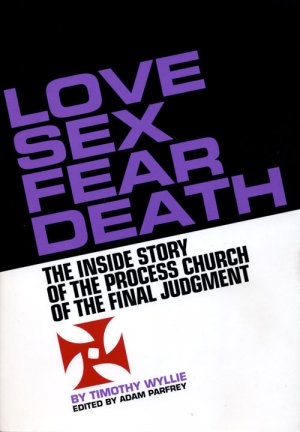 interested, at how everything is always so darkly hinted at, but never fully explained. A good place to start is if you could summarize, in your own words, what the Process Church was, as well as its belief system.
interested, at how everything is always so darkly hinted at, but never fully explained. A good place to start is if you could summarize, in your own words, what the Process Church was, as well as its belief system.
TIMOTHY WYLLIE: Well it started in the mid 60’s, around ’64 as a kind of psychotherapy system. Gradually people gathered around the two founders of the group Robert DeGrimston and Mary Ann. As we gradually started to dig deeper into the psychological and spiritual nature, two things happened at the same time. We started wanting to be together more and come together as a community, and at the same time, we started becoming less psychological, but more spiritual orientated. This was all in London. In about ’67 we left London and wanted to start a community on the island somewhere. And we wanted to buy and island, and of course we couldn’t buy an island. [chuckles] We ultimately moved to Mexico, and on the Yucatan Peninsula, we had the first seminal formative aspect of what we were into. We spent nine months on a very deserted little peninsula in the Yucatan. Then we went back to London and established a very large headquarters there, and after that, we started moving out into Europe and America. When we came to America in about ’68, we incorporated a church at that point, and it spread through the next ten years or so all throughout America. We had members in Chicago, Los Angeles, New York, Miami. In 1974, the two founders split up and the name was changed to The Foundation. We operated as the Foundation for about four or five years, and, in 1977, I left, as well as about a third of the group. Some of them went back, and then the group left New York and went around the southwest before settling in Utah. They were part of the group, but they now run quite a large organization that takes care of animals who are hurt. On one hand, it’s great work, but on the other, it’s not quite the vision we had back in the 60’s where we wanted to change the world.
PHAWKER: In broad strokes, can you give us an understanding of the belief system?
TIMOTHY WYLLIE: We did have a very complex belief system. It was rather informal, because as we became more spiritually orientated, we did get in touch with the inner aspects of ourselves, as well as what’s going on in the universe. We were basically in contact with something we call “The Beings”. We didn’t know what they were, but they seemed to be guiding us, and we felt they were responsible for small miracles, like when a fish washed up and we hadn’t eaten for three days. That then developed into a much more formal theology which we incorporated into the church, and what we had previously regarded as psychological archetypes got turned into a sort of theological framework. We had the authoritarian archetype that became Jehovah . We had the more easygoing archetype that became the Lucifer. We had the more fiery archetype which became Satan. Finally we had the archetype to bring them all together, which would be the Christ. So we had these four different archetypes, which then became this theological matrix. I, personally, have never really bought into the theological aspect of everything. I know the psychological aspects are very helpful and useful in life, but I didn’t really buy, as much as other people did, the theological structure.
PHAWKER: Now when did all the regalia come into line? When did you start wearing the black robes and strange medallions, and giving each other names like Father Michah and Brother Ely?
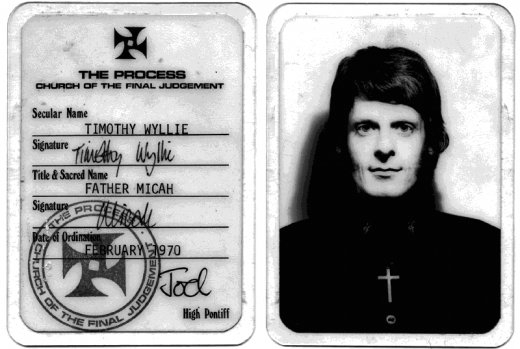
TIMOTHY WYLLIE: Pretty much as we formally became a church. Before that we probably had names. It’s a thing with people when they join religious groups, if you have a different name, it mostly fuels a different aspect of their personalities. All the rings and all that, though, came out of when we became the church.
PHAWKER: What role did the use of psychedelic drugs play in the evolution of all of this, if any?
TIMOTHY WYLLIE: It didn’t play any part in this, which is interesting. I had done psychedelics before I joined, so I had dabbled in that area, but Mary Ann was very much against psychedelics. So no, it wasn’t at all inspired by drugs, but the magazines that were launched under my responsibility have been perceived as psychedelically orientated, but of course they weren’t. However, in many ways, my experience with psychedelics before I joined allowed me that kind of access for a more easygoing and more open style than some of the others.
PHAWKER: You mentioned the magazines and graphically, they’re beautiful. Explain the premise and the purpose they served. Each one was a themed issue: love, sex, fear and death?
TIMOTHY WYLLIE: Absolutely, and we ended up with another seven or eight different topics as well, but we thought that those four would 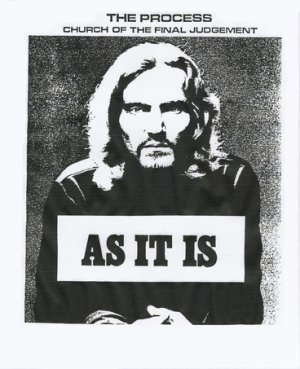 be the best title for the book. The fundamental principle behind them was the resolution of opposites. What we looked at, we would take a subject like death, and look at the positive viewpoint and the negative viewpoint. Now this was misinterpreted in the death issue. I think some people’s way of thinking made a serious error by going and interviewing Charles Manson in jail — because after all, who would know better than Charlie [chuckles] — which was, of course, a mistake since Manson was already falsely associated with us, but we had nothing to do with him at any point.
be the best title for the book. The fundamental principle behind them was the resolution of opposites. What we looked at, we would take a subject like death, and look at the positive viewpoint and the negative viewpoint. Now this was misinterpreted in the death issue. I think some people’s way of thinking made a serious error by going and interviewing Charles Manson in jail — because after all, who would know better than Charlie [chuckles] — which was, of course, a mistake since Manson was already falsely associated with us, but we had nothing to do with him at any point.
PHAWKER: Explain that, there was a chapter in Sanders’ book about the Manson family that implicated the Process Church somehow? Then there was a lawsuit and he was forced to remove that segment from the book?
TIMOTHY WYLLIE: Actually, we did sue them and they did settle out of court and remove that chapter. The problem came when they did the English edition of it. They put the chapter back in, so we had to do another court case in England. And, of course, England is very different from America. The judge was very very conservative, and also Robert and Mary Ann made a tremendous error of judgment of not handling it themselves but sending intermediaries instead. We lost that case. It’s a strange one, we never had anything to do with Manson, and he knew it too. The subtext, which is actually more interesting, was that Scientology material was found at Spahn Ranch, and also Manson had made several statements about Scientology prior to that. [The Scientologists], of course, didn’t want anyone to know what was happening, so they had a press conference and said it was us, the Process.
PHAWKER: I was going to ask you, since the founders of the church had split off from Scientology and were declared ‘suppressives’ initially by L. Ron Hubbard, which is tantamount to heretic, was the Process Church constantly harassed by the Scientologists?
TIMOTHY WYLLIE: I wouldn’t say constant. It’s quite hard to pin down exactly, for instance I was one of the directors up in Toronto and we had to deal with things like 200 pizzas arriving at our front door that nobody had ordered or a ton of sand on the front lawn. Now I can’t prove that the Scientologists did this, but I can’t imagine anybody else who would have done that. But on the whole, no, we didn’t get too much harassment from them.
PHAWKER: At its peak how big was the church and how many members were there, and where did the funding come from?
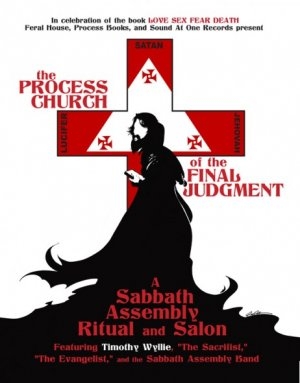 TIMOTHY WYLLIE: The funding actually came from magazine sales. The magazine at its prime had a circulation of about 200,000. We also had alot of different programs. We had coffeehouse shows, but it was always a struggle with money.
TIMOTHY WYLLIE: The funding actually came from magazine sales. The magazine at its prime had a circulation of about 200,000. We also had alot of different programs. We had coffeehouse shows, but it was always a struggle with money.
PHAWKER: What was the connection with the Alsatian dogs you guys used to walk around with?
TIMOTHY WYLLIE: Just that we loved them. Mary Ann really wasn’t fond of children, and she gave me my dog, Ishmael, and I think she just loved to give people dogs. We all loved German Shepherds. We could have other animals as well, but German Shepherds were the ones we really loved.
PHAWKER: Why was Sanders so opposed to the Process Church?
TIMOTHY WYLLIE: I don’t know that he was opposed to the Process Church. What happened is that he was writing this book, and he was trying to find some way of justifying how Manson could arrive at the way he was. I think he just picked on us because of a number of unfortunate coincidences. I think he just got into a state where he thought he could get away with it. He may have thought he was doing something good in exposing Satanism.
PHAWKER: Even though Satanic themes played a role in the cosmology of the Process Church, it was something wholly different from the Church of Satan?
TIMOTHY WYLLIE: Yes, oh yes. First of all there is already a Church of Satan, and it’s not like we were focusing only on Satan. What we were looking at was the nature of the prophecies. We were going back to the Christian evolution of our prime enemy, where Satan is the prime enemy, and you should love Satan. Not in a sense worshiping, but in a sense of understanding and comprehending. There is polarity in the universe. Everything has polarity, and to demonize the other the way the Christian church has demonized Satan. It’s madness, because by rejecting this aspect, we are harming ourselves because we don’t learn.
PHAWKER: And at its peak, how many members were there in the church?
TIMOTHY WYLLIE: At its peak, I would imagine there were between 150 to 200 people in the community itself — we made it very difficult to get into the community. It would take up to two years and we would insist that they give up everything, all their money, become celibate and then work entirely for us. I would say, probably at its prime, we might have had a couple thousand people who were following in one way or another. The magazine actually influenced a large number of people . It was an interesting enough magazine to get people interested in the community.
PHAWKER: What was the affiliation with Kenneth Anger and Mick Jagger?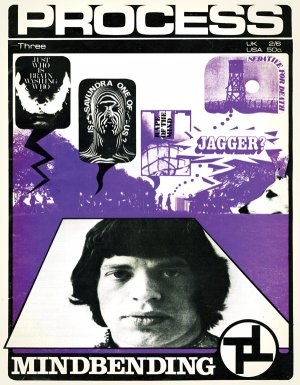
TIMOTHY WYLLIE: Kenneth Anger never really had any association with us. We showed his film at one point. Mick Jagger, we had interviewed him for one of the early magazines. We were in London, and he was just someone I knew. We used to go to the same dealer, Michael Hollingshead.
PHAWKER: That’s the guy that was almost singlehandedly responsible for bringing LSD to Britain! So why did you leave the Process Church and when was that?
TIMOTHY WYLLIE: I left in 1977. To answer that, I would have to talk on a number of levels. At the most basic level, I felt I had done what I had to do. I became director of the headquarters, and was involved in the whole operation. I did that for a couple of years. Then, I just felt that I had done my thing there and I was ready to move along. Things had been changing anyways in the Process foundation. I’m very lucky in a sense of being able to take along with me, since I had the magazine, a sense of leadership. I gotalot out of it, it was a very valuable experience for me. Not sure if I would do it again though.
PHAWKER: Let’s talk about your life after the Process, you’ve spent the last 30 years researching “non-human” intelligence?
TIMOTHY WYLLIE: That’s right, dolphins. I got very involved in dolphin research for a period. Then I kind of moved over to the angelic realm, which we actually touched on in the foundation; i was probably a little cynical about it. I had a near death experience in 1973 and angels pulled me back. I was strapped to a machine and healed. I had the actual experience of witnessing angels, which was an especially profound experience, but for a few years I kind of pushed it to the back of my mind, trying to cope with the reality of it. Then in 1981 I came across a situation with a young man in Toronto that the angels were channeling through him. We did some work on that and that formed the basis for my first book. I kind of continued on that, and got into more extraterrestrial research, and I’ve had a few extraterrestrial events in my life. So all that formed the basis of the three books I’d been writing on non human intelligence. Then I have a book coming out next April which is about the return of the Rainbow serpent. It’s a cosmic myth which appears to examine the serpent in the Garden of Eden. What was it doing there and where did it come from? It wasn’t just a manifestation of Satan.
PHAWKER: Did you say you had a number of extraterrestial experiences?
TIMOTHY WYLLIE: I have had a number in my life, yes.
PHAWKER: You live in New Mexico, correct?
TIMOTHY WYLLIE: I do, yes.
PHAWKER: These were in New Mexico?
TIMOTHY WYLLIE: One happened in New Mexico, one happened in New York. I’ve had about five or six; two really profound with contact, and one of which I wrote about in my book. What about you, are you plugged into that circuit?
PHAWKER: Oh, I’m interested. I’ve never had an extraterrestial experience, but I’m interested in all of these things outside our mainstream belief systems and divergent opinions about the nature of reality.
TIMOTHY WYLLIE: Good, it’s a very good time to start tuning in. I just got an e-mail from a friend of mine, well known in the new age circuit, and he’s really quite concerned about what’s happening
PHAWKER: Really, you think something’s about to happen?
TIMOTHY WYLLIE: Really. I’m starting to think that this 2012 thing has got a lot of juice in it. Really if you look at the state of the world, it’s all kind of collapsing at the same time within a four or five year framework. I have no idea what the 2012 thing means or what will happen, but I have the real sense that there is going to be some sort of singularity. This planet is much more loved by the extraterrestials than the people who live on it. They don’t want to see it destroyed, they don’t want to see it ravaged. I think there’s going to be a lot of action in the near future.
PHAWKER: So what is your plan for 2012?
TIMOTHY WYLLIE: Oh I’ll just be sitting around.
